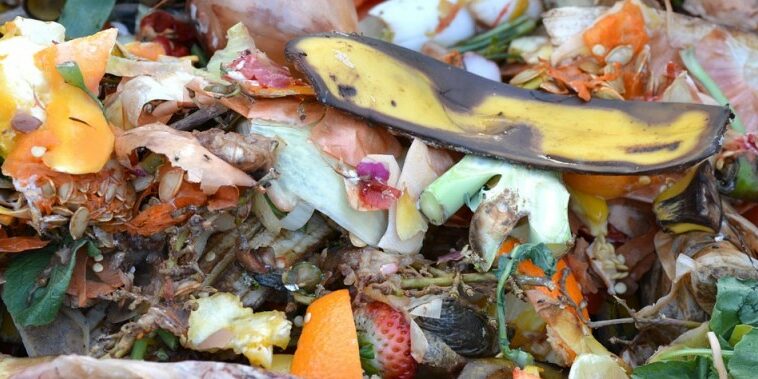I am making a renewed effort this season to NOT throw out any food! It’s still astonishing to me that Americans throw away 40% of our food – yes FORTY PERCENT!
Aside from being a total waste of money and valuable resources, almost all that food waste goes straight to the landfill, where is produces methane (one of the most potent greenhouse gasses.) When I really began to understand this a few years ago, I vowed never to toss food in my trash that could otherwise be composted. Thus began my crazy journey of various composting devices – yes my husband is rolling his eyes as I speak. Anyway, suffice to say that I pretty much find a way of composting every carrot peeling and tea bag that passes over my kitchen counter.
However, there are so many other ways that I can prevent even having to think about composting – cos I’m still wasting food, right?
Here are some tips that have really helped me:
1. If you have leftovers that you know you probably aren’t going to eat the very next day (even restaurant doggie bags,) FREEZE them. I came to this obvious piece of information late in the game. You can shove anything in the freezer and it’ll stay good for at least a couple of weeks (depending on the item).
2. Don’t necessarily pay attention to “Best Before” dates on food packaging: This dates are set to tell you that the food will be at it’s best quality, if eaten before the designated date. But best quality doesn’t mean the food has to be disposed of if you have gone over that date. A huge percentage of good food is thrown away because consumers believe that the food will be spoiled after that date – not true. So, remember, this “date” refers to quality not safety. The only date I adhere to is eggs, because I want to be very safe. Dairy products, meat and fish are no-brainers because you can smell if they have gone bad.
3. Always plan ahead and make a list: This is the one annoying action (for a disorganized girl,) that saves me $$’s when I am strict about it. If I plan the week’s meals in advance and make a thorough list, I am way less likely to waste a lot of food that week.
4. Careful buying food on sale: When we see perishable items on sale, it’s tempting to grab a few of them, however, unless you know that you and your family will eat every last bite, you’re better off not buying it.
5. Your dreaded crisper drawer: Yep – this is the drawer that I dread cleaning out because I know I’m likely to find bendy carrots and soggy lettuce that has to go. I’ve found the best thing I can do it to always have onions on hand – that way I can chop up onion & garlic and add any less-than-fresh veggies into the pot and make a quick soup. Even if your veggies have gone past the totally crisp stage, they will be fine in a soup. My fave leftover soups: leek & potato, carrot & ginger, cream of cauliflower or broccoli.
6. Never throw fruit away: There’s so much you can do with fruit before it goes bad that there’s really no excuse to chuck it. Here are my fave ideas: smoothies, cobblers, apple or pear sauce, apple/pear/banana fritters (fry with butter and brown sugar – yummy,) and of course if you are up to it – preserves.
7. Never throw away bread: Making breadcrumbs in your blender, or cubing your bread for crutons isridiculously easy.
8. Plan your meals around what’s in your fridge. This may sound obvious but I promise you, you need to pull everything out of those pesky drawers once a week and lay it all out on your counter. Once it’s all sitting in broad daylight, your creative brain will kick in. My mom is brilliant with using up leftovers because she grew up during the tail-end of UK rationing. It’s unfathomable for her to throw out a crumb of food.
9. Soft cereals & crackers: This is another mom tip – just place them on a baking tray in a medium oven (375 F) for 15 minutes and they crisp right up.
10. Finally save money on buying expensive veggie stock/broth by making your own out of odds and ends that you might typically trash: ends of celery, outer onion skins, stalks of herbs, ends of carrots etc. Just place them in a stock pot, cover with water, season and simmer slowly for about 45 minutes.
I highly recommend visiting Jonathan Bloom’s brilliant blog, Wasted Food.




